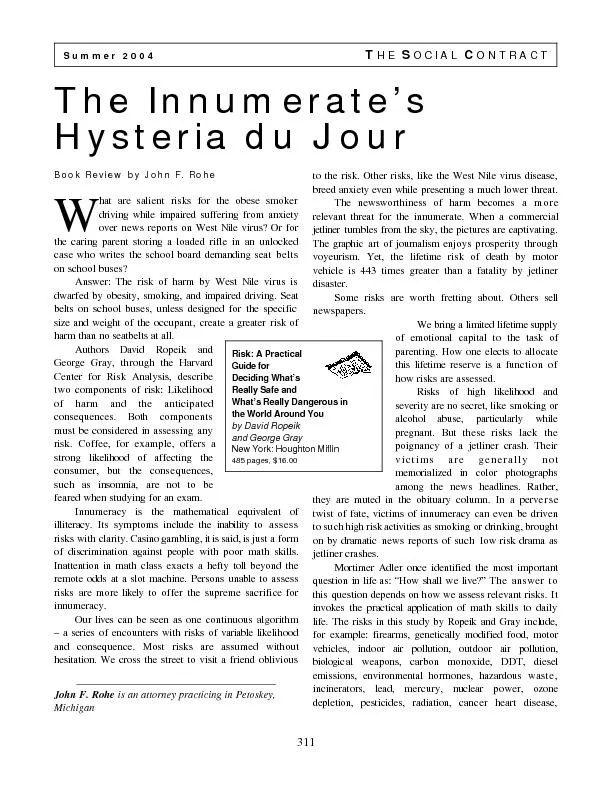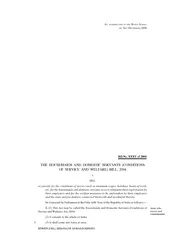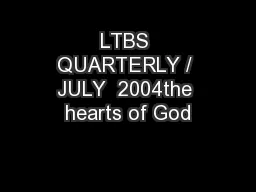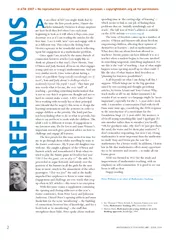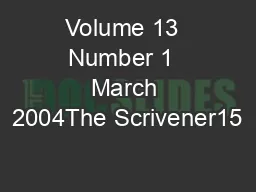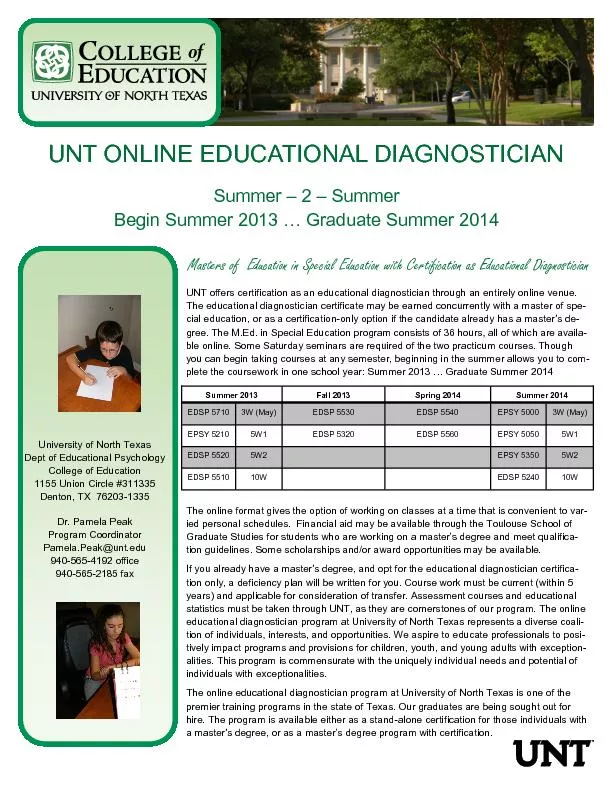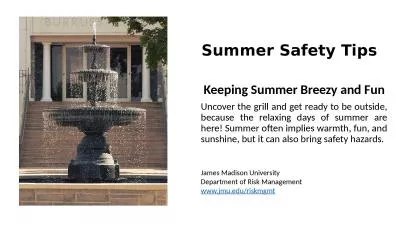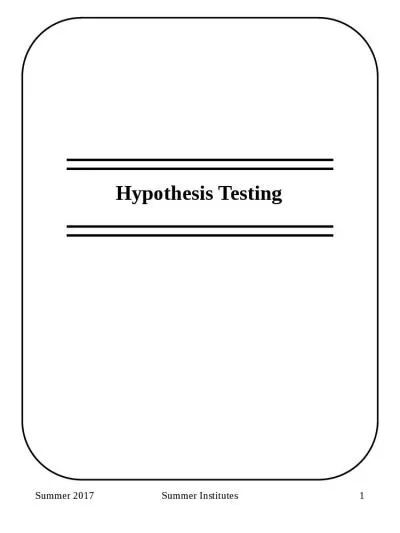PDF-Summer 2004THE SOCIAL C
Author : ellena-manuel | Published Date : 2016-04-28
311John F Rohe is an attorney practicing in PetoskeyMichigan Risk A PracticalGuide forDeciding What146sReally Safe andWhat146s Really Dangerous inthe Wor
Presentation Embed Code
Download Presentation
Download Presentation The PPT/PDF document "Summer 2004THE SOCIAL C" is the property of its rightful owner. Permission is granted to download and print the materials on this website for personal, non-commercial use only, and to display it on your personal computer provided you do not modify the materials and that you retain all copyright notices contained in the materials. By downloading content from our website, you accept the terms of this agreement.
Summer 2004THE SOCIAL C: Transcript
Download Rules Of Document
"Summer 2004THE SOCIAL C"The content belongs to its owner. You may download and print it for personal use, without modification, and keep all copyright notices. By downloading, you agree to these terms.
Related Documents

